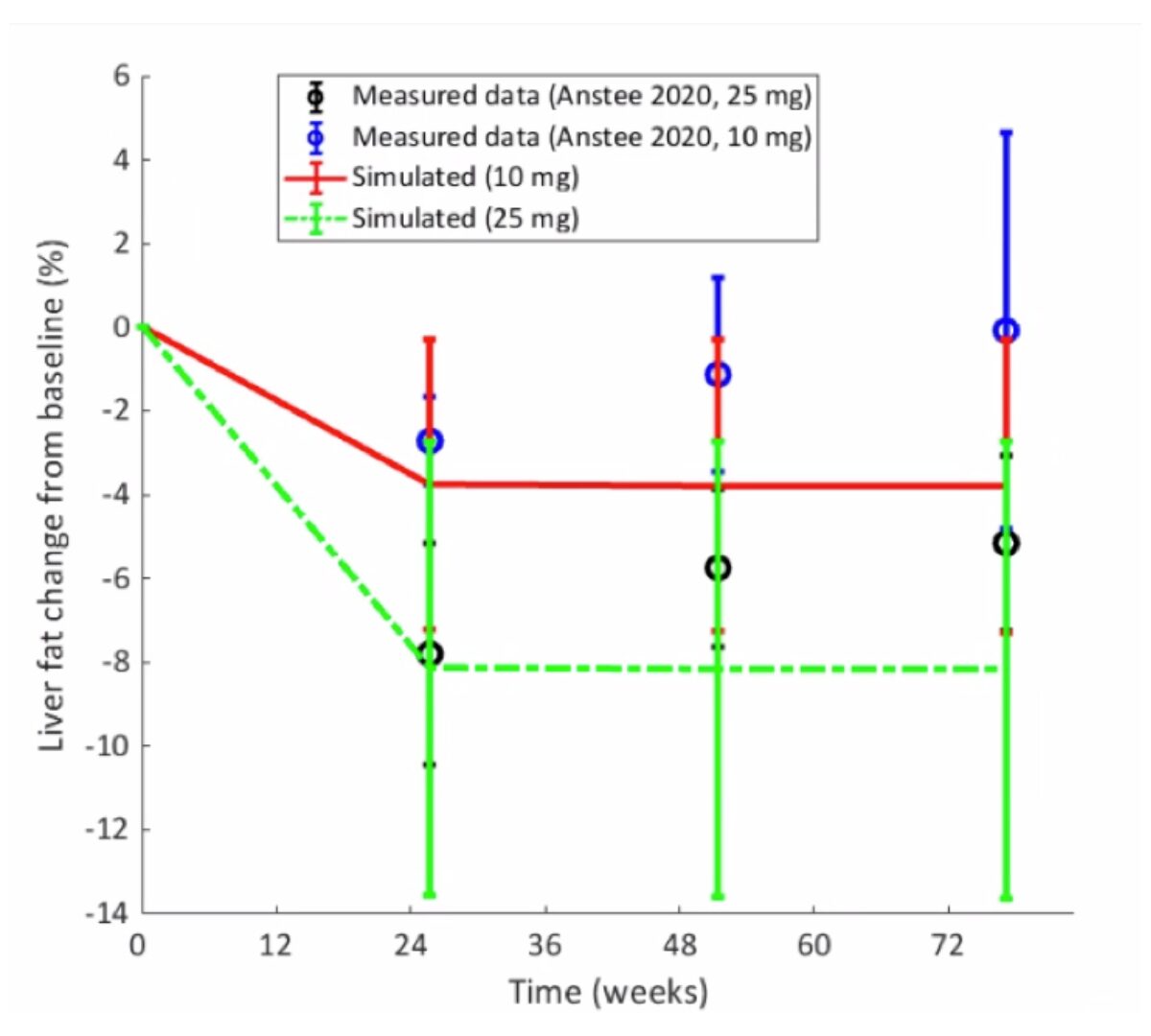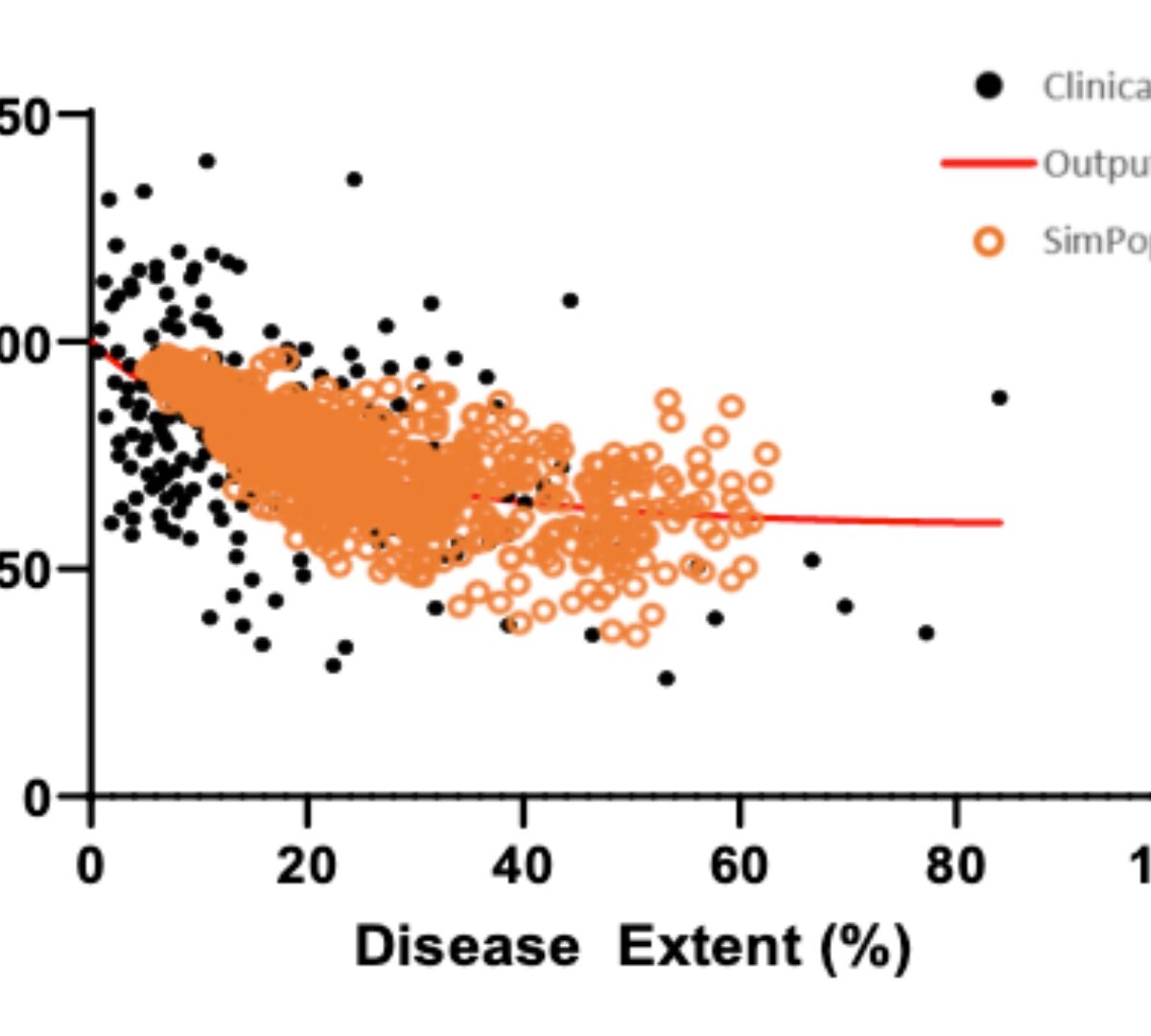Rifampicin (RIF) is an essential part of tuberculosis therapy and the pharmacokinetics (PK) of RIF has been of interest due to its non-linear and auto-induction behavior

Clinical Ocular Exposure Extrapolation Using PBPK Modeling and Simulation: Gatifloxacin Solution Case Study
Development of generic ophthalmic drugs has been extremely challenging due to the complexity of the ocular system and a lack of sensitive testing tools to evaluate its interplay with ophthalmic formulations.

Predicting the Efficacy of Obeticholic Acid Treatment for Non-Alcoholic Steatohepatitis (NASH) Using NAFLDsym, a Quantitative Systems Pharmacology Model of Non-Alcoholic Fatty Liver Disease
Obeticholicacid (OCA), a bile acid analog and agonist of the farnesoidX receptor (FXR), is currently in clinical trials for the treatment of non-alcoholic steatohepatitis (NASH).

Establishment of preclinical mechanistic in vitro-in vivo correlations for long-acting injectable suspensions
Long acting injectable (LAI) formulations administered through subcutaneous (SC) or intramuscular (IM) routes provide sustained drug release over an extended period.

ILDsym®, a Quantitative Systems Pharmacology (QSP) Platform, Successfully Simulates the Pathophysiology of Systemic Sclerosis-Interstitial Lung Disease (SSc-ILD) and Inter-patient Variability
Systemic sclerosis (SSc) is a rare connective tissue and autoimmune disease associated with inflammation of the skin and internal organs.

Use of Quantitative Systems Toxicology (QST) to Identify Potential Intrinsic Mechanisms of Toxicity
BAY1128688, a selective inhibitor of aldo-keto reductase family 1 member C3 (AKR1C3), was in clinical trials as a potential therapy to provide pain relief for women with endometriosis.

Delineating the Complex Interplay of Enzymes and Transporters Governing the Absorption and Disposition of Atorvastatin and the Metabolites Using Physiologically Based Pharmacokinetic (PBPK) Modeling
Atorvastatin (ATS) is widely used to treat high cholesterol and potentially lower the risk of cardiac complications.

A phase 1b dose escalation study of CD137 mAb agonist OC-001 as monotherapy in patients with advanced or metastatic cancer
OC-001 is a CD137 mAb agonist designed to show differential agonistic activity from that of competitor
antibodies. OC-001 provided T cell activation that

Physiologically Based Pharmacokinetic (PBPK) Modeling of Pyrotinib to Understand the Impact of Interplay Between CYP3A4 and P-GP on its DDIs with CYP3A4 Inhibitors/Inducers
To develop a PBPK model for pyrotinib and qualify it with the in vivo data obtained after oral administrations.

Implementation of a Physiologically Based Pharmacokinetic Modeling Approach to Predict Disease-Related Changes in Drug Pharmacokinetics in Patients with Nonalcoholic Fatty Liver Disease Conference name: International Society for the Study of Xenobiotics (ISSX)-Microsomes and Drug Oxidations (MDO) Joint Meeting
Introduction: Understanding disease-related changes in the pharmacokinetics of drugs in patients with nonalcoholic fatty liver disease (NAFLD) is of clinical importance...

Absence of association between abatacept exposure levels and initial infection in patients with RA: a post hoc analysis of the randomized, placebo-controlled AVERT-2 study
Infections are the most commonly reported AEs in patients with RA treated with immunosuppressive therapies, and

Clinical Ocular Exposure Extrapolation Using PBPK Modeling and Simulation: Moxifloxacin Solution Case Study
Development of generic ophthalmic drug products is challenging due to the complexity of the ocular system and a lack of sensitive...

Physiologically based pharmacokinetic (PBPK) simulations and modeling of botanical constituents
Botanicals have broad use as traditional medicines, natural health products, and dietary supplements around the world.

Modeling of Cyclosporine A-Induced Acute Kidney Injury with RENAsym®
Cyclosporine A (CsA) is an immunosuppressant commonly used to prevent organ rejection and can be used to treat other diseases such as...

Mechanistic modeling of biologics-induced liver injury (BILI) predicts hepatotoxicity of Tocilizumab through both on- and off-target effects
Biologics address a range of unmet medical needs. However, there are
increasing numbers of BILI cases which slow therapeutic development...

Simulating Multidrug Resistance Protein 3 (MDR3) Inhibition-Mediated Cholestatic Liver Injury Using DILIsym X, a Quantitative Systems Toxicology (QST) Modeling Platform
Inhibition of efflux transporters located on the canalicular membrane of hepatocytes is an important mechanism of cholestatic liver injury, which is...

Quantitative Systems Toxicology (QST) Modeling of Cimaglermin Alfa (GGF2) Hepatotoxicity Shows the Potential of BIOLOGXsym to Predict Biologics-Induced Liver Injury (BILI)
Biologics continue to address various unmet medical needs, but the occurrence of BILI can terminate clinical...

Modeling of Indinavir-Induced Crystal Nephropathy in RENAsym®
Indinavir, a protease inhibitor used to treat patients with HIV/AIDS, is known to induce crystal nephropathy. This is...

Evaluating Nephrotoxicity of Cisplatin in Rats with RENAsym, a Mechanistic Model of Drug-Induced Acute Kidney Injury
Acute kidney injury (AKI) is often initiated by cellular toxicity of proximal tubule epithelial cells (PTEC) when...

Furthering the clinical development of navicixizumab in advanced epithelial ovarian cancer patients with a population pharmacokinetic model and exploratory exposure-safety-efficacy response analyses
Navicixizumab is a first-in-class, bispecific, anti-angiogenic antibody to vascular endothelial growth factor (VEGF) and
